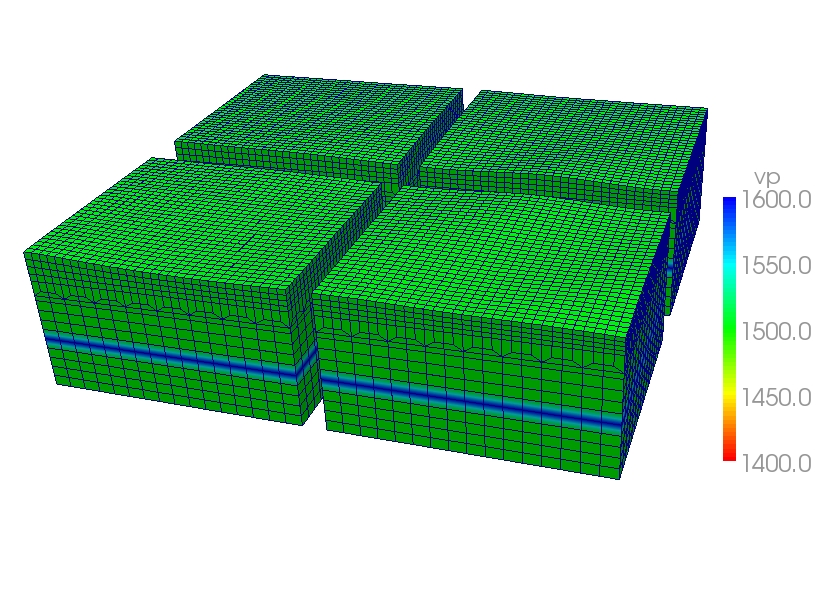


Write(args.outfile, mesh, file_format=args.output_format)įile "/home/prince/.virtualenvs/python101/lib/python3.5/site-packages/meshio/_helpers. $ meshio-convert mesh_TET.inp mesh_TET.vtkįile "/home/prince/.virtualenvs/python101/bin/meshio-convert", line 8, inįile "/home/prince/.virtualenvs/python101/lib/python3.5/site-packages/meshio/_cli.py", line 50, in convert In addition to Abaqus, other software like ParaView. I am trying to convert this INP file to VTK format, but it throws me 'Inde圎rror'. inp file contains T-spline control point coordinates, element connectivities. An Abaqus mesh can be extracted from an FRD results file. A CCX mesh (nodes and elements) can be extracted from an FRD results file. The VTK format is suitable for importing into Paraview for post processing and visualization. I am aiming to convert it to a file format such that I can view element sets in Paraview. CalculiX FRD: This translator reads the CalculiX results format (FRD) generated by CCX. The INP file consists of nodes and only volume elements along with element sets and solid sections. I had to compress it to zip as I was not allowed to upload INP file in this issue form. ParaView: – ParaView is an open-source, multi-platform data analysis and visualization application.I have attached the INP file for your reference.Neper: – Neper is a software package for polycrystal generation and meshing.MTEX: – MTEX is a free Matlab toolbox for analyzing and modeling crystallographic textures by means of EBSD or pole figure data.WARP3D: – WARP3D is under continuing development as a research code for the solution of large-scale, 3-D solid models subjected to static and dynamic loads.

FEAP: – FEAP is a general purpose finite element analysis program which is designed for research and educational use.ABAQUS: – Abaqus offers powerful and complete solutions for both routine and sophisticated engineering problems covering a vast spectrum of industrial applications.This list is not comprehensive, nor do we officially endorse the use of these software packages for all applications. I tried using MATLAB as an intermediate step but all I could do is to export the points and use them for triangulation, which isn’t very helpful. I’m trying to perform some initial mechanical analysis in either ABAQUS or Ansys. Links to a selection of these packages is provided below. vtk file that contains points and cells data and attributes. Our group utilizes several software packages for conducting computational solid mechanics modeling. A primal formulation for imposing periodic boundary conditions on conforming and nonconforming meshes, Computer Methods in Applied Mechanics and Engineering.On topology-based cohesive interface element insertion along periodic boundary surfaces, Engineering Fracture Mechanics.On Interface Element Insertion into Three-Dimensional Meshes, Engineering Fracture Mechanics.Discontinuous Element Insertion Algorithm, Tennessee Research and Creative Exchange.DEIP, discontinuous element insertion Program - Mesh generation for interfacial finite element modeling, SoftwareX.Related References (please consider citing these works): Additionally, the toolbox contains a small linear finite element program and plotting functions for MATLAB, as well as interfacing scripts for passing data between Abaqus input files, Gmsh mesh files with Code_Aster compatibility, and Paraview visualization files.Ĭurrent distribution: Version 4.0, released February 10, 2022ĭownload “DEI Program” DEIProgram04_0.zip – Downloaded 1126 times – 16 MB The code is compatible with WINDOWS and LINUX operating systems and both MATLAB and OCTAVE computing environments. Test out the code online through the capsule at ! Two-dimensional meshes: 3, 4, 6, and 9-node elements.The code is under continual development and currently has capabilities for the following element types: The algorithm is topology based and is suitable for complex, unstructured meshes. Applications: ANSYS, Abaqus, ParaView, AutoCAD, Adaptive Hydraulics (AdH), ADvanced CIRCulation (ADCIRC), Gridded Surface Subsurface Hydrologic Analysis. These elements are used for intrinsic cohesive zone modeling and for the Discontinuous Galerkin method. Discontinuous Element Insertion Program (DEIP)ĭEIP is a MATLAB/OCTAVE toolbox for inserting zero-thickness elements into a continuous finite element mesh in two and three dimensions.


 0 kommentar(er)
0 kommentar(er)
